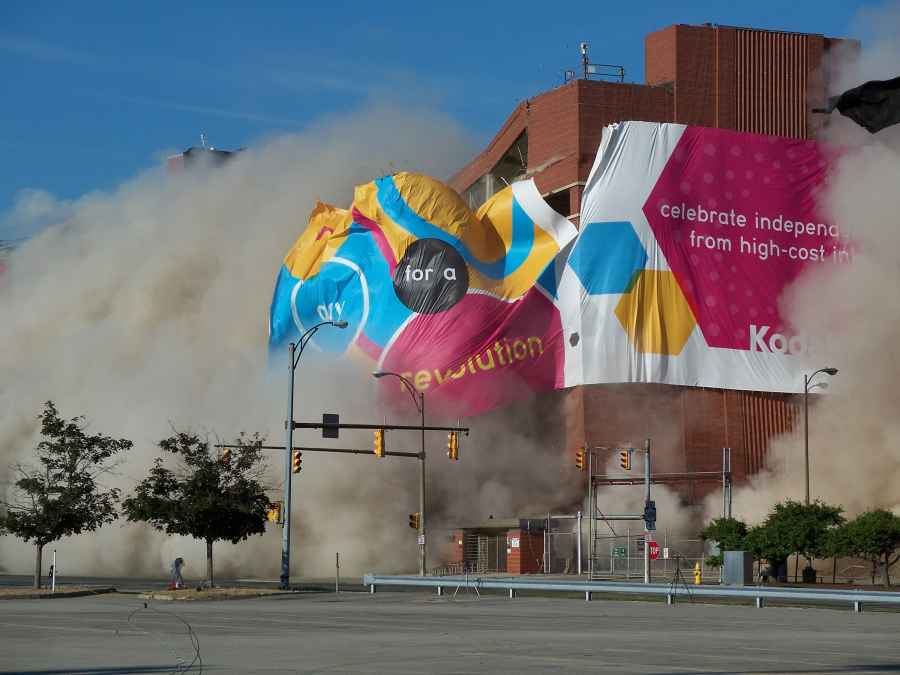NEWS UPDATE 2.30PM: Kodak has hit out at media reports and insisted that the device was not a nuclear reactor. It has confirmed, however, that the Californium Flux Multiplier, installed in 1974, contained ‘highly-enriched uranium that can be used to make nuclear weapons’. However, it adds that this was in the form of ‘alloyed aluminium fuel plates and was not easily adaptable to creating a nuclear weapon’. Kodak says that safety checks were carried out routinely. A spokesman added: ‘It was not licensed or classified as a reactor by the US Nuclear Regulatory Commission. It was not capable of a runaway reaction, and the amount of energy it produced during use as an analytical device was barely enough to power a typical four-watt light bulb.’
[Original article continues from here]
AP is seeking urgent comment from Eastman Kodak’s HQ in Rochester, New York after it was revealed that Kodak apparently used the reactor to test chemicals and other materials for impurities.
The fridge-sized reactor contained three-and-a-half pounds of ‘highly-enriched’ uranium, reported the Rochester Democrat and Chronicle.
The reactor was decommissioned in 2006, but the uranium wasn’t removed until November 2007, according to the paper. This was five months after Kodak used explosives to trigger demolition of two buildings by controlled ‘implosion’, according to an AP article published in July 2007.
The firm scrapped Building 23 and Building 9 on Lake Avenue, Rochester, saying they were no longer needed after the move to digital imaging.
The first of the explosions was watched by up to 3,000 people (see picture above).
The reactor was located below basement level in Building 82 along Lake Avenue, according to the Democrat and Chronicle, which learned of its existence when a Kodak employee happened to mention it to a reporter.
At the time, it was reported that Kodak had demolished more than 80 buildings on the site over the previous decade.
The June 2007 demolitions were the first time explosions had been used and further demolition on Lake Avenue followed later that year.
Kodak hired Bianchi Industrial Services to carry out the implosions.
Commenting on the demolition, the contractor said at the time: ‘Bianchi will ignite over 350 pounds of explosives using stick dynamite and linear-shaped charges, similar to those used by NASA for severing fuel tanks on the space shuttle.
‘The explosives have been carefully placed using nearly two miles of detonating wire to strategic stress points throughout the base of the 487,000 square foot, eight-storey building.’
In 2007, Kodak Park covered 1,100 acres – across nearly four miles through the City of Rochester and the Town of Greece.
At the time of writing, a Kodak spokesman was not available for comment
when asked by AP whether the explosions were a wise move, given the reactor
nearby.
Kodak has previously told the Democrat and Chronicle that the reactor posed ‘no radiation risk to the public or employees’.







